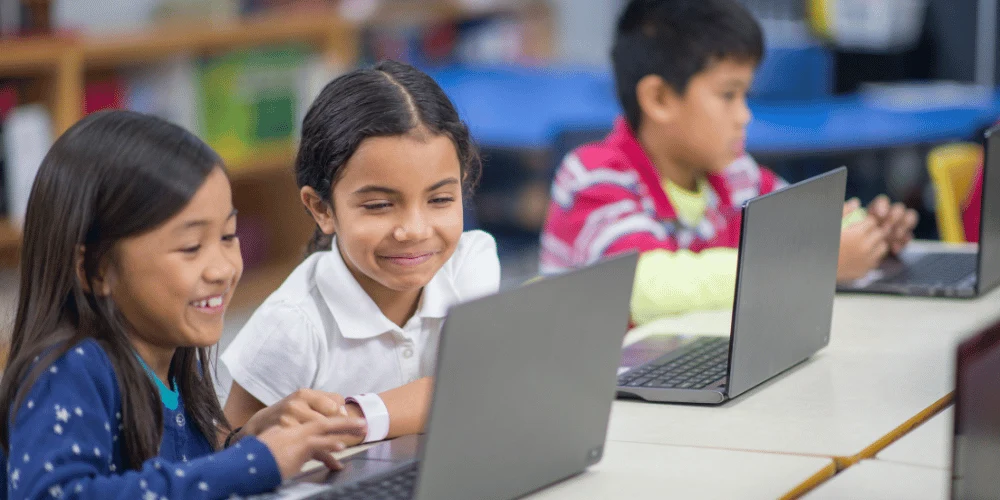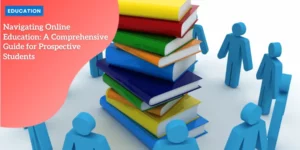Teaching Literacy in the AI Age: Benefits, Challenges, and What Parents Need to Know
The Current State of AI in Education
Increasing Adoption of AI by Teachers
Today, a significant number of English teachers—about 40%—are integrating AI tools into their classrooms, according to recent data from the.
Anúncios
This trend highlights the growing influence of artificial intelligence in the educational landscape.
Instant Feedback and Enhanced Learning
AI platforms offer remarkable features, such as instant writing feedback and reading comprehension assistance.
These tools can rapidly analyze and critique student essays, helping to improve writing skills more efficiently than traditional methods.
Anúncios
For instance, AI can instantly spot grammar mistakes, suggest better word choices, and provide structural advice. Furthermore, comprehension tools can quiz students on readings, ensuring they grasp the material thoroughly.

AI in Assignments and Quizzes
Another practical use of AI that teachers are embracing is in the creation of homework assignments and quizzes.
Anúncios
These tools can generate assignments tailored to the needs of individual students, allowing for a more personalized learning experience.
AI can pull from a vast database of questions and writing prompts to create exercises that challenge students at the appropriate level, enhancing their learning journey.
Unlike human instructors, who need time to prepare individualized assignments, AI can do this almost instantaneously, significantly easing teachers’ workloads.
Educators like Jen Roberts from San Diego have adopted these technologies to provide a more efficient and supportive learning environment, as referenced in the .
The Influence of AI on Literacy Skills
Despite the advantages, the surge in AI usage has corresponded with concerns regarding its effectiveness in teaching comprehensive literacy skills.
The U.S. Department of Education has reported that post-pandemic literacy levels among fourth and eighth graders have stagnated, potentially influenced by the shift to digital and AI-based learning tools.
This data suggests that while AI excels in providing immediate feedback, it may lack the nuanced understanding and engagement offered by human teachers.
As schools and teachers continue to navigate this “new Wild West” of educational technology, the balance between leveraging the strengths of AI and maintaining the irreplaceable value of human instruction remains a key objective.
Benefits of AI in Literacy Education
AI as a Substitute for Private Tutoring
AI can be a game-changer in large classrooms where teachers struggle to give each student individualized attention.
These AI tools simulate the role of private tutors, providing personalized feedback and support to students.
For instance, in classrooms with as many as 160 students, like that of English teacher Jen Roberts, AI tools can bridge the gap by offering one-on-one attention that teachers might find challenging to provide.
As USA TODAY reports, AI can produce instant writing feedback and reading comprehension assistance, significantly lightening teachers’ workloads.
Immediate Feedback on Writing Assignments
| 🚀 Feature | 🎯 Benefit |
|---|---|
| ⚡ Immediate Feedback | Students receive instant responses, allowing them to quickly understand and correct mistakes. |
| 📚 Enhanced Learning | By receiving real-time suggestions, students refine their writing skills more effectively. |
| 🕒 Saves Time | AI reviews essays faster than teachers, speeding up the revision process. |
| 💡 Personalized Insights | Feedback is tailored to each student’s strengths and weaknesses, improving learning outcomes. |
Generating Fresh Ideas and Writing Prompts
AI’s creativity isn’t limited to evaluating writing; it can also inspire fresh ideas and writing prompts.
For example, Lisa Parry, a 12th-grade teacher in South Dakota, leveraged an AI tool to generate unique topics for her students’ book reports on “Fast Food Nation.”
The AI suggested intriguing angles that students hadn’t considered, such as analyzing how McDonald’s uses sugar in its products.
This not only sparked student interest but also encouraged them to think outside the box, leading to more engaging and diverse essays.
Parry observed a noticeable improvement in the originality of her students’ work when they used AI to brainstorm ideas.
This ability to prompt innovative thinking is invaluable in a classroom setting, where repetitive and uninspired topics can become monotonous for both students and teachers.
As teachers and students continue to adapt to the integration of AI in education, they must navigate its benefits and limitations carefully.
The goal should always be to enhance the learning experience without compromising essential skills or teacher-student interactions.
Limitations and Challenges
AI tools are increasingly being used in classrooms, but they come with their own set of challenges.
One significant limitation is AI’s struggle with effectively teaching oral language comprehension.
While AI excels at teaching the phonetic aspects of reading and mapping sounds to letters, it falls short in mimicking the nuanced, interactive storytelling that human teachers provide.
This limitation hinders students’ ability to fully grasp and engage in oral communication.
Another issue is the reduction in social interaction and verbal communication among students.
As kids spend more time interacting with AI on their computers or tablets, they spend less time talking to their peers and teachers.
This decreases the amount of oral communication practice they get, which is crucial for language development and social skills.
Moreover, there are growing concerns about students’ overreliance on AI for their writing assignments.
Teachers have noticed that some students are using AI tools to generate their essays, leading to issues with plagiarism and a decline in the development of critical thinking and writing skills.
This overreliance can lead to students becoming dependent on AI, potentially hindering their ability to think independently and critically.
Overall, while AI has the potential to enhance literacy education, it is essential to address these limitations and challenges to ensure that technology enhances, rather than replaces, traditional teaching methods.
Balancing technological integration with human interaction is key to maximizing the benefits of AI in the classroom.
The Impact on Student Performance
The post-pandemic landscape has had a profound effect on student literacy, with many fourth and eighth graders still struggling to regain their pre-pandemic skills.
Federal data indicates no significant recovery in literacy among these students, contributing to a pressing concern in the educational community.
Factors such as the shift toward digital education and the integration of AI in classrooms significantly impact these trends.
Changing Teaching Methods
Modern teaching methods, heavily influenced by digital advancements, are reshaping how literacy is taught.
Teachers are now leveraging AI to provide instant writing feedback and generate reading comprehension assistance, which was unimaginable a decade ago.
While these tools are efficient, some educators argue that over-reliance on AI could hinder the development of critical thinking and analytical skills in students.
The Shift in Reading Habits
Alongside changing teaching methods, students’ reading habits are evolving rapidly due to increased usage of digital devices.
Engagement with traditional reading materials is decreasing, leading to potential long-term effects on literacy.
Students are consuming more content through screens, which could limit their exposure to rich, varied language and complex texts, essential for developing strong literacy skills.
As we navigate these changes, it’s crucial to balance the innovative use of technology with traditional teaching methods to ensure a well-rounded literacy education.
Both educators and policymakers must watch these trends and adapt strategies to support student literacy in a balanced manner.
Teacher Perspectives and Concerns
As AI becomes increasingly prevalent in classrooms, teachers have voiced several concerns about its impact on critical thinking, the potential for plagiarism, and the risk of eventually replacing human educators.
Impact on Critical Thinking
Many teachers worry that AI could stifle the development of students’ critical thinking skills.
Platforms like ChatGPT provide quick answers and writing assistance, but they might also discourage deep, analytical thought.
Students may rely heavily on AI tools for assignments, potentially bypassing the essential mental processes involved in crafting original essays or solving complex problems.
Plagiarism and Academic Integrity
Academic integrity is another critical issue.
Teachers have reported instances where students used AI to write entire essays, leading to concerns over originality and honesty.
AI tools can potentially churn out well-structured, yet unoriginal, content that fails to reflect a student’s true abilities.
Teachers find themselves spending more time checking for plagiarism rather than focusing on instruction.
Risk of AI Replacing Teachers
Lastly, there is a legitimate fear that AI could someday replace traditional teaching roles.
While AI can assist with grading and providing instant feedback, these systems lack the personal interaction and nuanced understanding that human teachers offer.
Educators are irreplaceable in their ability to inspire, motivate, and adapt to the individual needs of their students.
These concerns highlight the need for a balanced approach to integrating AI in education.
As schools continue to adopt these technologies, finding the right mix of AI tools and traditional teaching methods will be crucial.
The goal should be to enhance, not replace, the irreplaceable aspects of human instruction.
Looking Ahead: The Future of AI in Literacy Education
More Schools Preparing to Implement AI Tools by 2025
Schools are steadily gearing up to implement AI tools by 2025, aiming to enhance literacy instruction across the board.
Various school districts, such as Newark Public Schools and Northern California’s San Ramon Valley Unified School District, are planning to use AI platforms like Khan Academy’s Khanmigo to help kids with their writing skills.
This preparation signifies a major shift towards adopting AI technologies to provide personalized education and support to students.
Evolution of AI Platforms for Enhanced Literacy Instruction
The evolution of AI platforms is promising significant advancements in literacy education.
Tools like ChatGPT and other AI chatbots are continually refined to generate more accurate and contextually relevant feedback, benefiting student writing processes.
Currently, AI tools can assist with generating fresh ideas and providing immediate writing feedback, which can be invaluable for both students and teachers to maintain a dynamic learning environment.
Need for Balance Between AI Integration and Traditional Teaching Methods
While AI integration in literacy education grows, it is crucial to balance it with traditional teaching methods.
Teachers fear that over-reliance on AI could potentially harm students’ critical thinking skills and reduce meaningful human interactions.
Without this balance, students may miss out on the nuanced feedback and personal connection that human teachers provide.
The key is to use AI as a supplemental tool rather than a replacement for traditional teaching methods to ensure a well-rounded education.
As AI tools continue to evolve and become more integrated into classrooms, finding the right mix between technological aids and traditional instruction will be essential.





